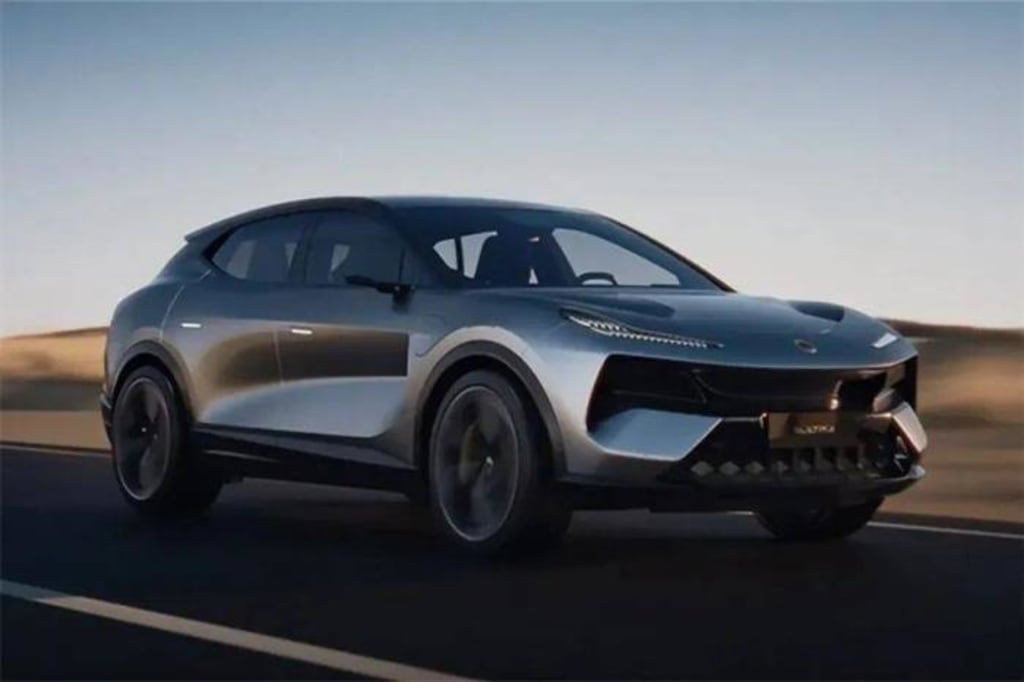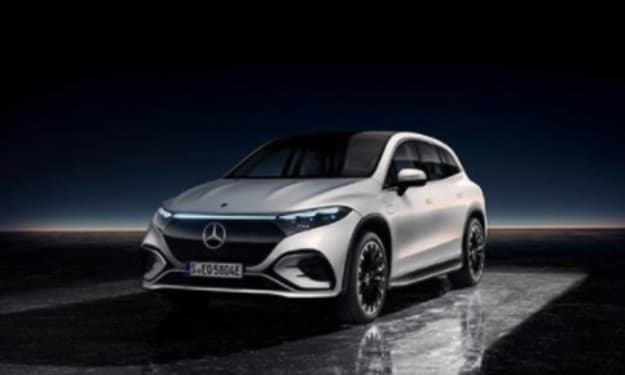The same three global sports car brands
Is "supercar brand electrification" the trend or not?

With the wave of electrification sweeping in, no car company can stay away.
Porsche's official IPO and direct entry into the DAX 40 blue chip list of the Frankfurt Stock Exchange is intended as a tribute to Porsche's classic, the 911.
There is so much behind the V W Group's choice to IPO Porsche. If we look at the data from 2021, Porsche brand global sales of 302,000 units, accounting for only 3.4% of the Volkswagen Group's 8.88 million units, but 5.31 billion euros of operating profit accounted for 27.6% of the Volkswagen Group's 19.275 billion euros, saying that Porsche is the Volkswagen Group's "cash cow" is not too much.
After the IPO, the V W Group will lose absolute control of Porsche, but in exchange for about 9.4 billion euros in revenue, which will add to the V W Group's electrification transition, rather like a kind of "strong man breaking his wrist".
For Porsche, the IPO is a milestone event. Not only does it allow the Porsche-Pierce family to regain control of the family business after more than 10 years, but it also brings capital attention to the potential windfall of "electrification of supercar brands.
Ferrari, one of the world's top three supercar brands, was listed on the New York Stock Exchange in 2015, so it was only natural that everyone's attention fell on Rutgers. Compared with Ferrari and Porsche, Rutgers seems to be more cautious and keeps its own pace steadily.
So is "supercar brand electrification" the trend or not? What is the core meaning of it? And who will have the last laugh?
In the global context of "carbon neutrality", almost all countries and regions have put forward strict carbon emission requirements for enterprises and users, and mainstream car companies have set up a timetable for "carbon compliance", and some of them have even started to stop selling fuel cars. In the new energy trend, supercar brands can not be isolated, electrification naturally can not be avoided.
Looking at the global new energy sales in the past 10 years, from 125,000 units in 2012 to 6.5 million units in 2021, more than 50 times in just 10 years. And this growth momentum is far from stopping, it is expected that by 2025, the global new energy penetration rate will reach 20%, when the global annual sales of new energy may exceed 18 million units. It is not likely that electric supercar will become the new windfall, after all, all segments of the track are now crowded enough.
If we look at the market demand side, with the strong rise of new energy brands represented by Tesla, consumers are constantly reshaping the criteria for judging the performance of cars. In the past, in the fuel car era, displacement was king; but in the electric car era, adding an extra motor at will can solve the problem.
Take the 300,000-plus Tesla Model 3 Performance, for example, it accelerates in 3.3 seconds per 100 kilometers, easily challenging a million-class fuel performance car. For supercar brands, acceleration performance is one of the lifeblood of the product, if they do not actively embrace electrification, they will inevitably have to accept the descending blow from the electric car.
If you can't beat it, you can join it. "Electrification of supercar brands" is not a compromise, but rather a trend, so that the brand can better continue and develop. In the process of electrification, the same three global supercar brands Porsche, Ferrari, and Rutgers, although the same way, progressed and focused are not the same.
First of all, Porsche, as a successful supercar brand in the field of electrification, should have had a better future with a relatively successful product like the Taycan. But after the IPO, Porsche will inevitably be held hostage by capital to look at profits, and the brand premium is the best source of excess profit, equivalent to the extra money consumers are spending to buy the "standard".
Then look at Ferrari, although it was the earliest listed, but mainly on the fuel car to grab excess profits, plug-in hybrid models can only be considered just "touch". In addition, Ferrari's first purely electric model is expected to be launched only in 2025, by then I'm afraid the flowers are cold.
Lastly, compared to Porsche, there is no IPO, it naturally does not have too much profit baggage, so it can use a more low-key and humble posture dedicated to creating more extreme products for consumers. Because LUTZ knows that in the era of electric cars, everything is being reinvented, including the brand premiums accumulated in the fuel car era.
Compared to Ferrari, LUTZ has long expressed its determination to electrify through the Evija, an all-electric sports car, and the Elite, which made its global debut in March this year, has shown everyone LUTZ's unique insight into the "electrification of supercar brands": electrification + intelligence, one cannot be missing.
First of all, let's talk about electrification, which, in the view of Rutgers, should include not only power and range but also handling and energy replenishment.
As we all know, fast acceleration of electric cars is innate, and the Rutgers Eletre is going to make it even more extreme: the maximum power of the front and rear dual permanent magnet synchronous motors reaches a terrifying 905 horsepower, supplemented by SiC controllers, which can achieve a higher power density of components and electrical energy conversion efficiency, and the fastest acceleration of 100 km is only 2.95 seconds.
In terms of range, the performance of 600 km under WLTP conditions has exceeded most of the models on the market, which is closer to the real working conditions than the mainstream CLTC standard in China, effectively alleviating the mileage anxiety of users.
The Eletre's low wind resistance coefficient of 0.26 Cd and the aerodynamic package such as the electric rear wing bring the maximum net downforce of 90 kg, reflecting the design expertise of Rutgers for more than 70 years.
The front and rear multi-link suspension, air suspension, 48 V active stabilizer bar, CDC active control dampers, and One-Box braking system together form Eletre's chassis system, which combines performance and comfort. The addition of rear-wheel follow-me steering also makes this large SUV still agile enough.
Energy replenishment is an issue that many electric supercars tend to ignore, and the Rutgers Eletre, as a large SUV, understands the direct impact of energy replenishment on the user experience. For this reason, Rutgers Eletre adopts a full 800 V high-voltage architecture, and with the support of a 420 kW flash charging pile, it can replenish 120 km of WLTP pure electric range in as fast as 5 minutes, and from 10% to 80% of power in as fast as 20 minutes.
In addition, to match the high-end travel needs of users, Lutus will also build and operate more than 200 Lutus flash charging stations in CBD, high-end hotels, luxury business districts, and golden landmarks in more than 20 cities. Even for those who use home charging piles, Rutgers Eletre can provide 22kW intelligent AC home charging piles, and the charging speed is three times faster than ordinary charging piles.
Then we come to intelligence. Assisted driving and an intelligent cockpit are the intuitive expression of an electric car's intelligence or not. To improve the user experience, Rutgers Eletre can be said to be spared no cost.
For intelligent assisted driving, the perception system of Rutgers Elite consists of 34 high-performance sensors, including 4 LIDAR, 2 4-D imaging millimeter-wave radars, 4 angular millimeter-wave radars, 7 8-megapixel cameras, 4 2-megapixel surround view cameras, 12 ultrasonic radars, and 1 attention detection camera in the car, together forming a five-fold perception with cementer-level accuracy system.
The Elite is equipped with the Rutgers AI driving system, which uses three industry-leading algorithm models - risk model, game model, and exclusive model - to protect users' safe driving.
The intelligent cockpit part, Rutgers also shows the sincerity that other supercar brands do not have. The dual Qualcomm Snapdragon 8155 chips with 32 G of RAM not only make it smooth and easy to use at the moment but also leave enough performance and space for future OTA upgrades. In addition, Gigabit Ethernet, 5G communication, Bluetooth 5.2HD, and UWB digital key can bring owners a more intelligent car experience.
Not only the supercar brands like LUTHERSE need to face the pressure of electrification transformation, but traditional luxury brands are also even more so, and at present, the situation of traditional luxury brands is not optimistic.
Taking the market as an example, the sales of BBA in the first half of this year fell by 18.9% to 24.2% year-on-year, and their market share in luxury brands also dipped below 60% for the first time. These shares were not taken by the second-tier luxury brands some of the second-tier luxury brands were only worse. BBA lost orders, eventually flowing to the new energy models in the middle and high-end, which is a question worth thinking about.
The reason for this, I think and BBA and other traditional luxury brands in the early stage of new energy development is perfunctory, not unrelated. The early BBA did not pay enough attention to the new energy market and launched many low-quality "oil-to-electric" models, which have not even been discontinued yet. These models bring consumers a bad user experience, but also let the traditional luxury brand faith slowly collapse, and the brand's premium gradually weakened.
The market is like sailing against the current, no progress is regression. If the old dominant brands cannot face the new energy wave with a proper and humble posture, they will be eliminated by the market. Only by trying to embrace the trend and self-innovation, can we achieve self-nirvana.
Thankfully, Rutgers has chosen the right path. Through the extreme polishing of "electrification" and "intelligence", to bring users a more pure advanced product experience, rather than thinking of relying on the brand premium to cut leeks, this is LUTZ's insistence and understanding of "supercar brand electrification This is the insistence and understanding of LUTZ on "supercar brand electrification".
Sometimes slow is fast, the only way to go more long-term. Let's wait and see for the future electrification road of LUTZ.
About the Creator
R Bbu Kurkovva
With a wild heart, the future is as far as it can go.






Comments
There are no comments for this story
Be the first to respond and start the conversation.